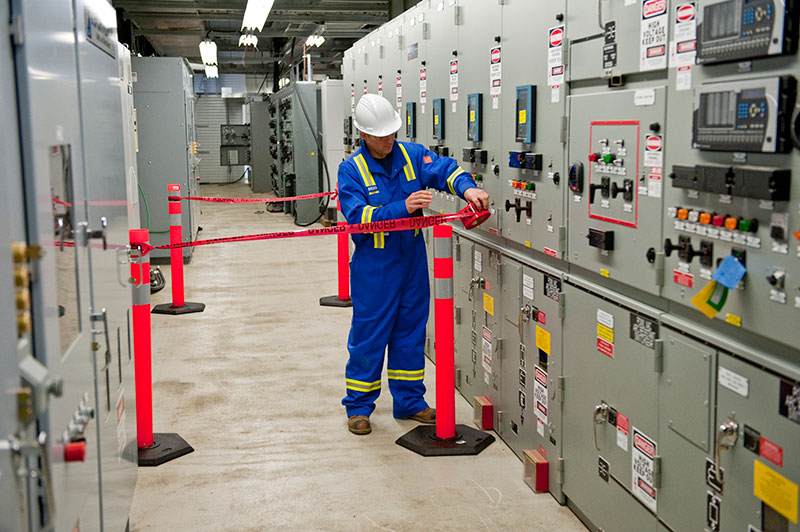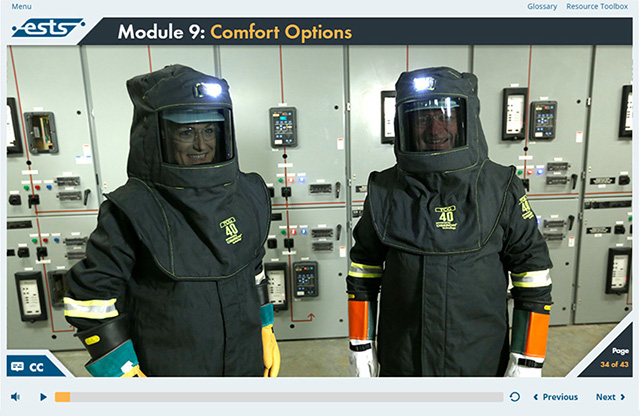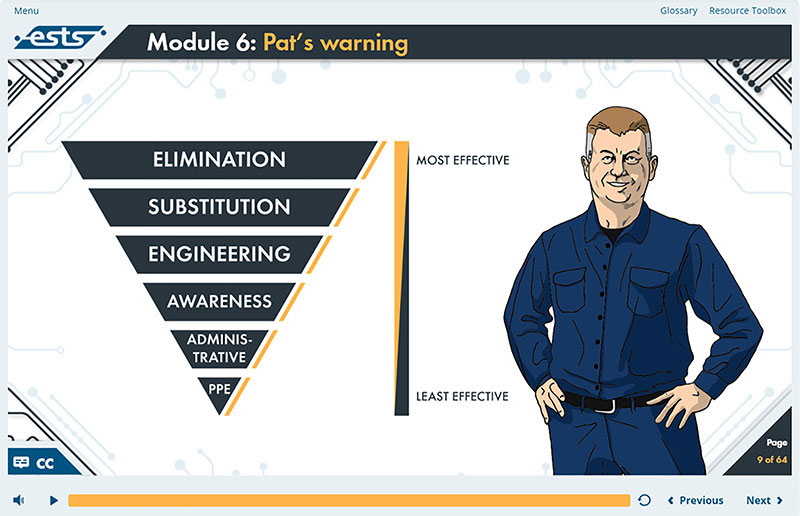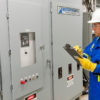Working around electricity can be dangerous, and often requires several forms of Personal Protective Equipment (PPE) and other protective devices to ensure worker safety at all times.
Protective equipment can range from safety glasses and shock rated CSA approved footwear, to lockout and tagout procedures.
Arc Flash and Electrical Safety training and protective equipment is designed to keep Canadian workers safe in hazardous working environments and prepare you with the knowledge to properly complete all work duties necessary.
Understanding Arc Flash
So, what exactly is arc flash? A transient of sufficient magnitude can cause an arc to form between conductors within an instrument, or across test leads. Once this arc occurs, the total available fault current can feed the arc and cause an explosion.
So, Why do you Need Training?
The result is an arc flash, which can cause a plasma fireball fueled by the energy in the electrical system. Temperatures can reach about 3,000°C, or 5,000°F, instantly burning or melting any non-retardant clothing and causing beyond third-degree burns.

The 2018 version of our ESTS electrical safety arc flash & shock course was developed for workers who perform energized electrical work and is fully CSA Z462-18 and CSA Z1001-18 compliant. The overall course content was developed using industry accepted best practice standards as the underpinning in support of meeting provincial and federal regulatory due diligence for arc flash and shock.
The training provided focuses both on electrical safety practices within the workplace as well as the identification of the hazards of arc flash and shock. The course also provides information regarding additional protective measures including defining Approach Boundaries, the selection of appropriate Electrical Specific PPE, Tools & Equipment with proper pre-use checks/inspection, care, use and maintenance and content related to utilizing appropriate work practices/procedures are provided.


ESTS Electrical Worker training is based on industry Standards and Regulations, providing documentation tools in support of the employer’s overall Occupational Health & Safety Management System and an Electrical Safety Program. Employers are required to have an updated Electrical Safety Program based on industry Standards and Regulations for workers to receive the most benefit from this course.
Learners will find training content is comprehensive and detailed, using interactive elements to help the student learn the concepts of how to apply the training in the field. Training is delivered from a first-person perspective and focuses on worker and supervisor relations.
Basic Personal Protective Equipment includes, but is not limited to:
- Helmet or hard hat
- Goggles for eye protection
- Gloves (leather or rubber)
- Hearing protectors
- Safety footwear
- Cotton protective clothing with long sleeves
Personal Protective Equipment designed to protect you from the hazards of arc flash includes but is not limited to:

- Flame-resistant (FR) long-sleeved shirt and/or jacket with sleeves rolled down and front fully buttoned up (FR clothing must fully cover all skin and ignitable clothing)
- Natural fiber work pants
- Rubber insulating gloves with leather protectors worn over top
- Safety glasses;
- Hard hat;
- Leather work boots
- Insulated hand tools.
Although these pieces of Personal Protective Equipment are designed to help keep workers in dangerous working environments safe, they do not guarantee a worker will not be seriously harmed in the case of an arc flash.
A combination of proper training, good working practices and the proper PPE is the only way to ensure worker safety in all dangerous work environments.


